There have been many extraterrestrial creatures in fiction, but none have had the same impact as the Xenomorphs. Since their debut appearance in the film Alien, these monsters have piqued attention, and fans have been unable to get enough of this extraterrestrial threat.
It has reappeared in multiple sequels and comic books, and the creature’s lore has been added to and renewed on a regular basis. The Xenomorph, created by the legendary H.R. Giger has five primary stages in its life cycle. The Chestbuster is the third step of this complicated life cycle. It comes after the egg and the facehugger stage, and the Chestbuster stage in the movies features some horrific sequences.
This is the stage where the Xenomorph erupts out of the host’s chest cavity, as the name implies. However, depending on the type of Alien produced and the circumstances surrounding its birth, there are various different varieties of Chestbusters. In fact, some varieties are not even born from the chest cavity in the first place! We take a closer look at the dark world of the Xenomorph’s Chestbuster stage in this video and show you the various forms of Chestbusters seen in movies and comic books.
Bellyburster
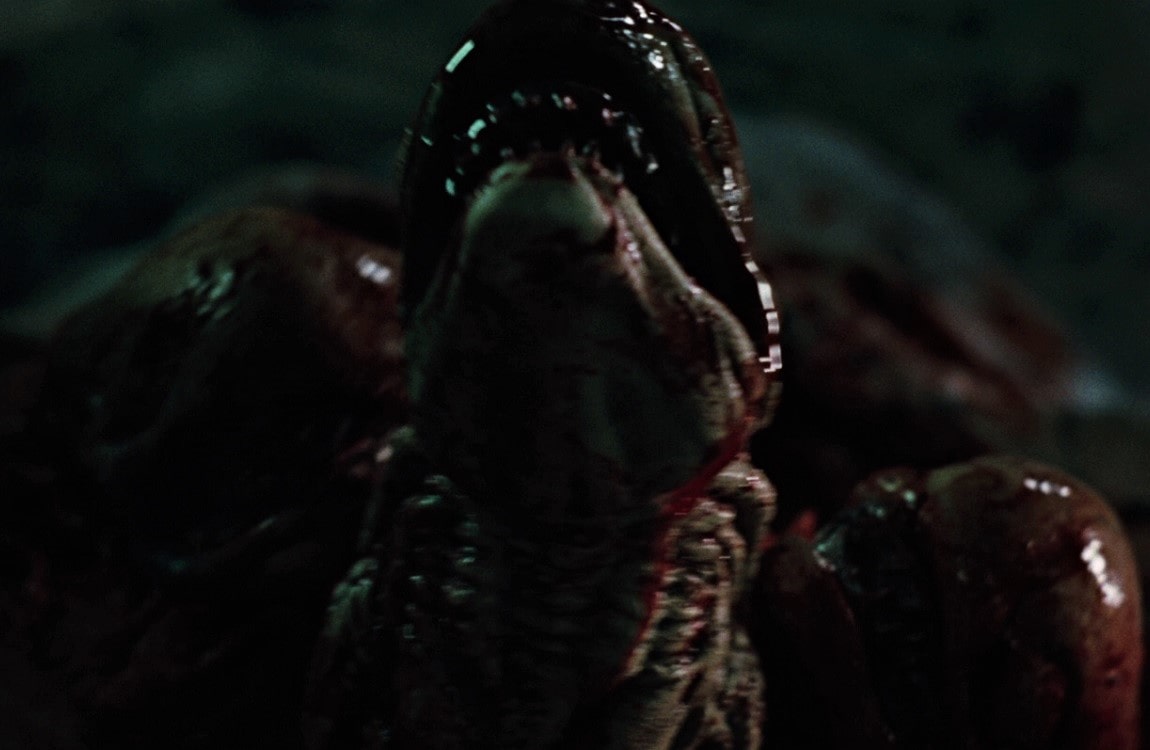
We just told you about certain types of Chestbusters, which don’t emerge from the chest cavity of the host. The Bellybuster is one such creature, and this Xenomorph infant emerges from the abdomen of the victim. Do you remember the Predalien birthed from Scar? It could force Xenomorphs in their embryonic stage down the host’s throat.
These victims seemed to be only the pregnant females, and it was probably because it would provide food for the baby Xenomorph, which could feed on the fetus. It could also be that the Predalian saw the pregnant belly to be more appropriate for spawning Xenomorphs. The Predalian started off as a Juvenile Queen, but using multiple larvae it quickly brought about an increase in the Xenomorph population and the hive size.
So, how does a Bellyburster work? It is not clearly specified, but with regular Facehuggers, cancer is probably deposited, which forces the body to spawn an embryo. As for the Predalien, it seemed like actual embryos were being deposited at once. The Bellybursters are tiny in appearance and weigh only around twenty pounds. They look similar to the Chestburster, but the mouth is larger. There are multiple spawns from a single host, and thus, this is an effective way to increase the number of Xenomorphs rapidly.
We have seen these creatures briefly in Aliens: Labyrinth, where a bloated host gives birth to four Xenomorph infants that burst out of her stomach. These creatures were somewhat deformed, and they died shortly after birth. Later, in Aliens: Resistance, numerous hosts get their bellies ripped apart by Bellybursters storming out. These Bellybursters would kill at least one of their own after birth, but the reason for such behavior wasn’t explained. The link-up between the Bellyburster and the Predalien was fascinating, and it was one of the most terrifying types of Chestbursters that we have encountered.
Protomorph Chestburster
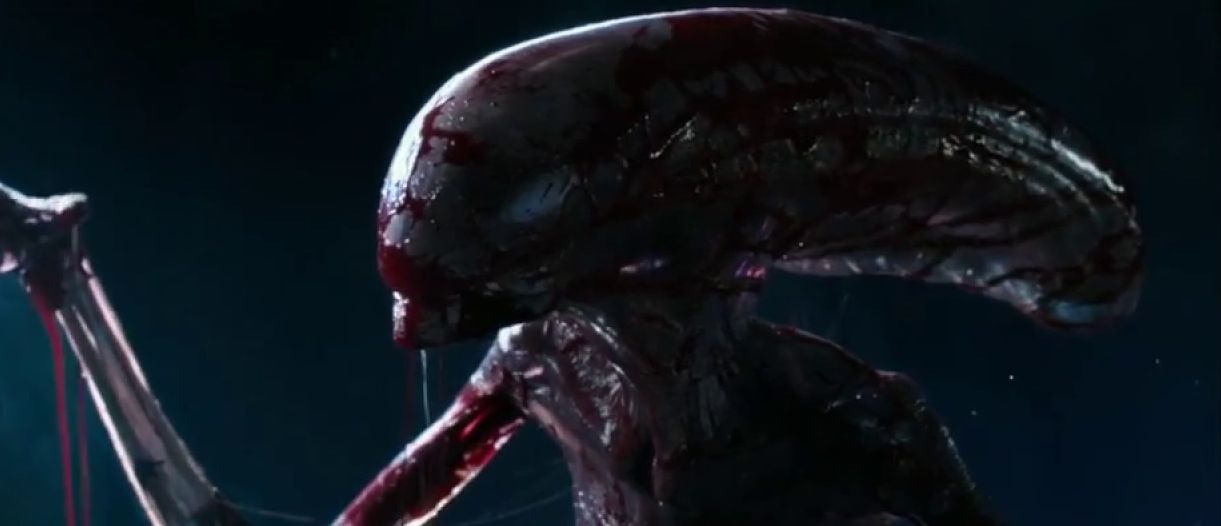
The Protomorph Chestburster was introduced in the movie Alien: Covenant, and it had a remarkable similarity with a Xenomorph. The egg stage, the facehugger stage, and the full-grown specimen were all similar, and the only difference could be noted in the appearance. There is a beautifully haunting scene in the movie that shows the Protomorph Chestburster emerging from the host body.
As the host screams in agony, it rips apart his mid-section and emerges in a pool of blood, slime, and guts. It could immediately stand up, and the bi-pedal stance looked quite stable. The limbs were well-developed and it had an elongated head with sharp teeth at the front, which we have seen in Xenomorphs before.
The scene was creepier because someone was watching over the whole process. The Protomorph Chestburster struggled a bit to break free from the host body, and it did not immediately rush to escape. It possibly skipped the shedding of its skin, and the outer layers of the creature appeared to be somewhat blue in color.
The limbs, fingers, and rib cage look like they are covered in smooth skin, and the outward appearance has some originality to it. In fact, there is a school of thought that believes that the Protomorph Chestburster is a whole different species altogether. One major difference from the Xenomorph can be noted in its set of teeth. While Xenomorphs have narrow and pointy canines with translucent lips, the Protomorph has a human-like set of sharp teeth with no such lip.
There is a behavioral difference as well because the Protomorph seems to be more animalistic compared to the stealthy and calculative Xenomorph. Whether or not it is a form of Chestburster or simply a new species, the Protomorph certainly managed to grab the attention of the fans in this movie.
Bloodburster
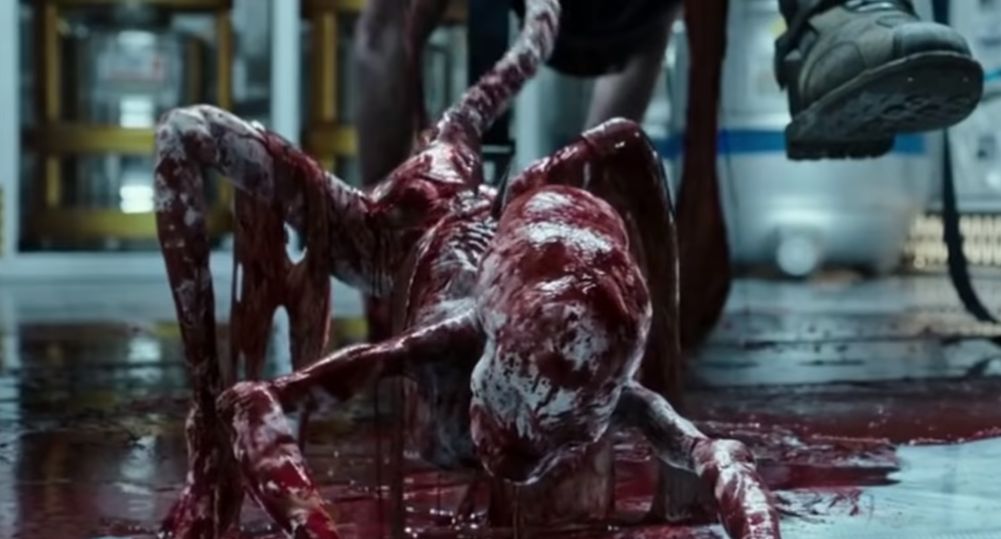
The Neomorph was an extraterrestrial species that shared a few characteristics with the Xenomorph. The Bloodburster is the third stage in its life cycle and is also referred to as some kind of Chestburster. The method of gestation is an absolute nightmare as it gets implanted into the host through microscopic motes, dispersed from egg sacks. Using the open orifices, the host’s body is invaded, and the health of the host starts to deteriorate rapidly. Finally, the Bloodburster punctures through the skin and claws out of the host’s body.
The method is very similar to that of a Chestburster, but the point of emergence is not fixed. It depends on how the host was infected, and it could be from any point in the body. While the Xenomorph Chestbursters are defenseless and helpless, the Bloodburster is quite capable of defending itself right from the beginning.
It is fully formed even in its infant form, and the small quadruped looks a bit similar to an infant Runner. Ridley Scott later mentioned that the similarities were intentional. It was initially called the Backburster, but later it was rechristened to Bloodburster. Its skin is pale and grayish in color, and the translucent appearance will remind you of a Hammerpede.
Just like the Xenomorph, the Bloodburster is also capable of adapting different traits according to the host. If it emerges from the spine, it has dorsal fins on its back, but such appendages are not present if it emerges from the mouth of the host. They are quite aggressive and they can attack those in the vicinity seconds after birth. It was indeed a gory sight to watch the Bloodburster force it’s way out of the host, and this is easily one of the most terrifying kinds of Chestbursters out there!
Regular Chestburster
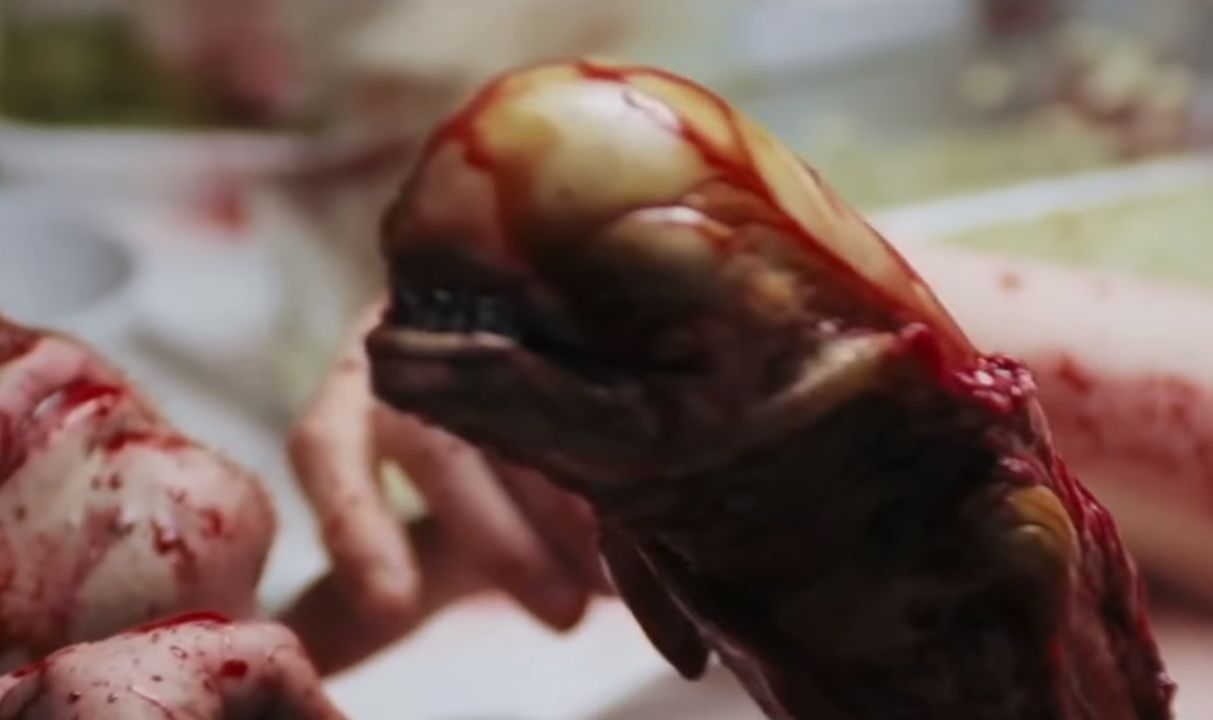
It is the third stage in the life of a regular Xenomorph, and it is implanted into the host’s chest cavity by a Facehugger. Once it matures, it bursts out of the host’s chest cavity, and the host dies a horrible death! It is believed that if the Chestburster cannot emerge from the host’s body at the right time, the host dies prematurely and the organism inside develops further until it is strong enough to emerge. However, if the host dies too early in the development process it can be fatal for the creature.
The regular Chestbursters are hardly a foot tall and two feet long if you account for their tiny tail. Their appearance is like a giant worm, and the skin is beige or brown in color. They have a mouth equipped with sharp teeth, and the powerful tail can help them reach great speeds. Some Chestbursters have tiny arms, while others have stubs suggesting the possibility of developing further into an arm. It could be well-developed with a longer gestation period, and the stubs would be fully formed arms in that case.
The ones that are well-formed look like smaller versions of a fully developed adult. Their structure varies depending upon the host, but their behavior after emerging is somewhat similar in all cases. It uses the organic material within the host to nourish itself, and after a rapid gestation period, it becomes strong enough to break out. Some of the hosts feel sick, but there are others who report feeling healthier because of endorphin and adrenaline secretion in the body. After emerging from the host body, a regular Chestburster is vulnerable. It is defenseless except for its acidic blood, and it looks to escape quickly.
Chestbursters have killed humans in this stage, but they prefer to hide till they are mature and strong enough. They grow very quickly, and in a matter of hours, they are fully grown. This stage of the Xenomorph is commonly seen in the movies and the regular Chestburster is familiar to all the fans of the franchise.
Animal (Bambi) Burster
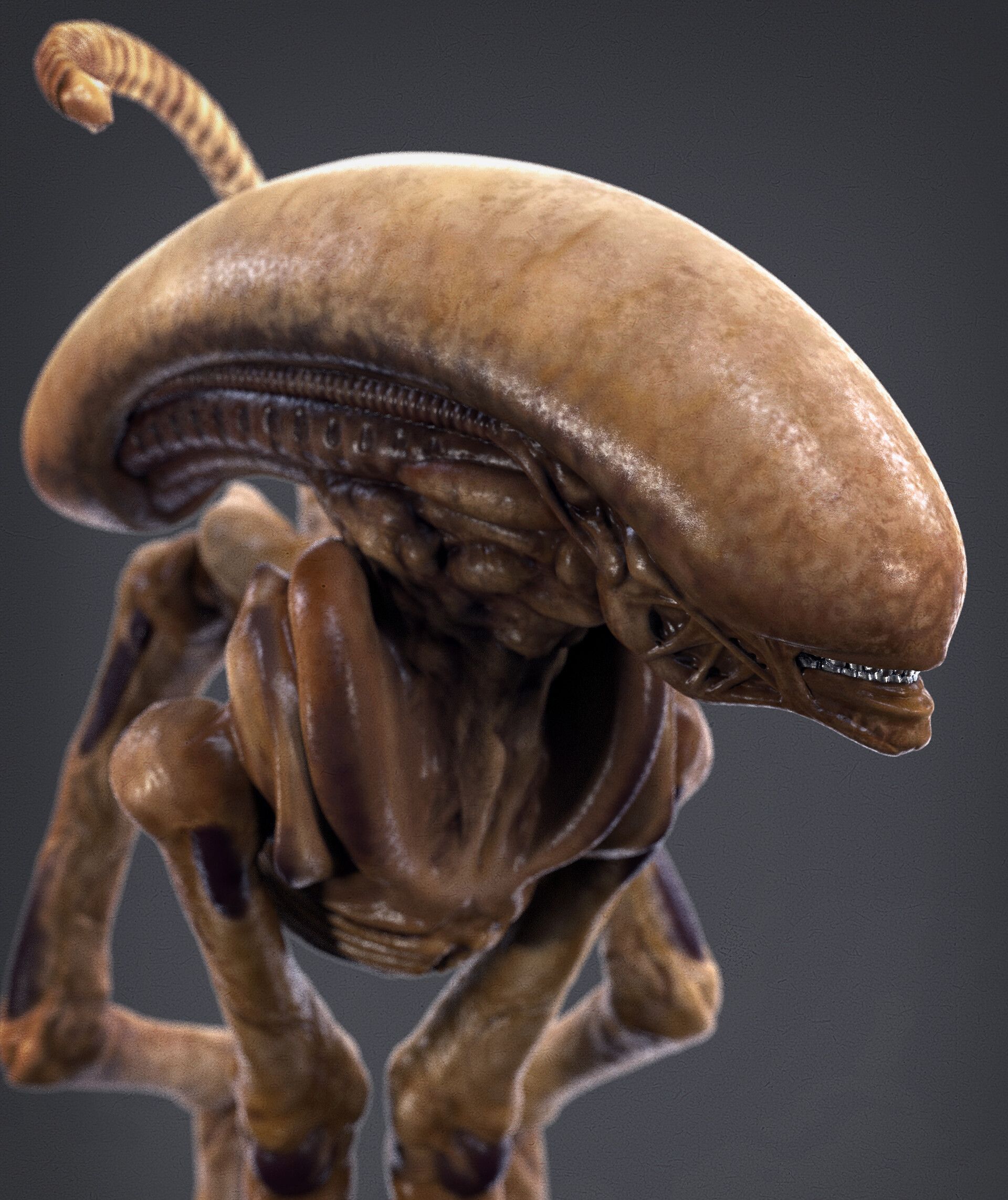
The Animal Chestbursters is also known as Bambi Burster is a form of Chestburster born from animals. It is significantly faster and more agile than those born from humans because the DNA absorption during the gestation period brings in some animal traits in these creatures. In Alien 3, we have seen a Bambi Burster born from an ox, and it had well-developed limbs that enabled it to run around within seconds after emerging from the host body. The Runner Alien, which was born from a dog, was also very similar.
A dog named Spike was kept in the prison by an inmate and it was impregnated by a Facehugger. The creature was referred to as the Dragon, and after violently erupting from the dog it hid in the prison’s ventilation network until it matured. The inmate found him and mistook him for Spike, but it quickly spits acid onto his face and blinded him. He tumbled over into a giant ventilation fan and was killed instantly.
Once it was fully grown, it went around killing several inmates in the prison. Eventually, Ripley managed to kill the lead-covered creature, when the fire sprinklers were activated and it was sprayed with water causing the creature to explode due to a massive thermal shock.
Predalien Chestburster
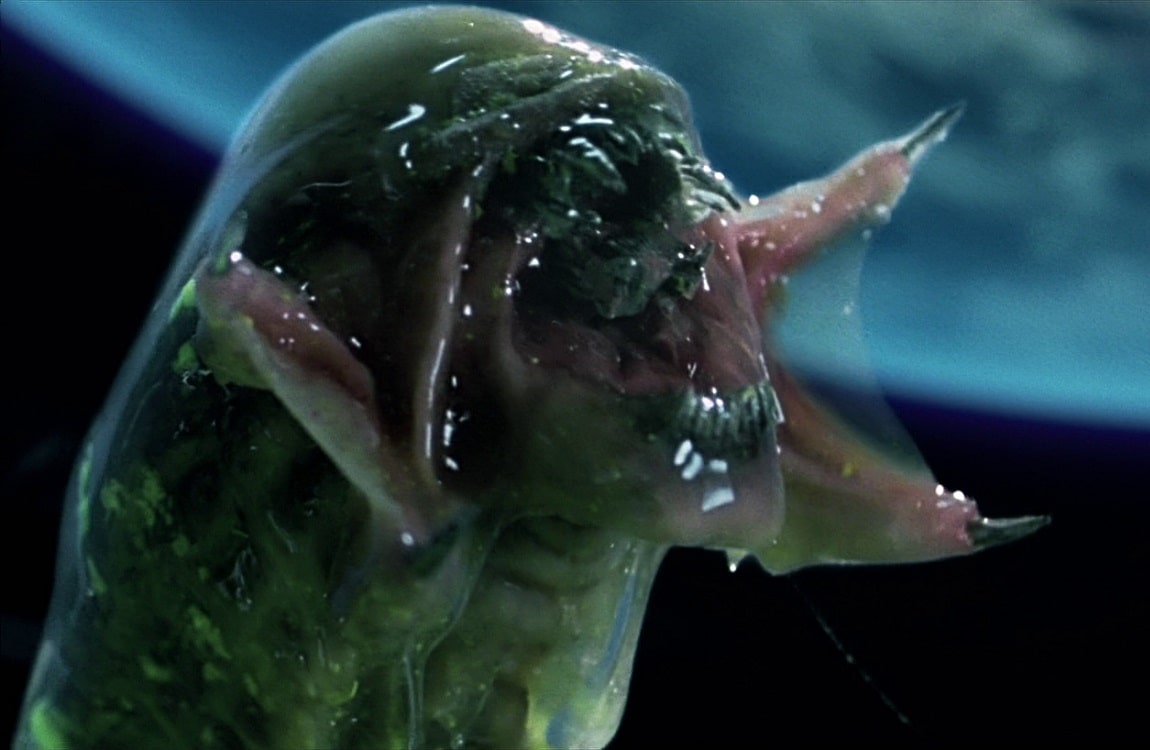
We have already spoken about how the characteristics of a Chestburster depend upon the host. So, when a Predator is used as a host, some of the Yautja characteristics are found in the resulting Chestburster. The Predalien Chestbursters have mandibles like the adult Predaliens, but they lack the dreadlocks that grow later during their development. These creatures have light skin, and they tend to shed this skin soon after bursting out. We have seen glimpses of this creature at the end of the first Alien vs. Predator movie, and at the beginning of the second one.
Mouthburster
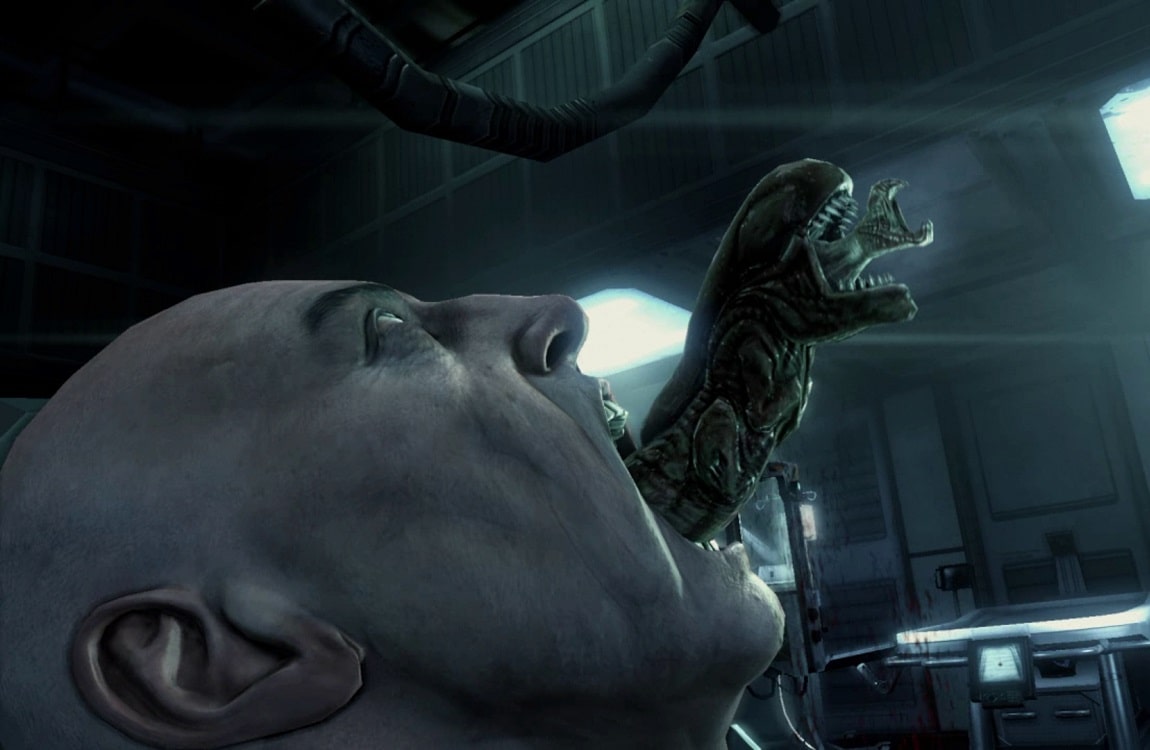
This particular Chestburster was seen in the Alien vs. Predator video game. This first-person shooter enabled the player to go in as the Aliens or the Predators or the Colonial Marines. If you play as an Alien, you will witness Chestbursters emerging from the bodies of two prisoners who are being experimented on.
Two scientists enter the room to collect a specimen, and they notice that it is missing. This specimen, called specimen 6, is soon found emerging from the mouth of the second victim. It initially came out through the chest, but it went back after realizing that it could be a way to escape. Finally, it comes out of the mouth, and the scientists are taken aback.
It comes out with a screeching scream, and the ones inside the chamber are terrified. It is termed the Mouthburster, and the main scientist outside decided to observe the creature further because of its cunning nature. However, things change drastically after the creature gets away.
Eventually, it is fully grown and it helps the other captured Xenomorphs and the Matriarch to escape. They stay dormant for a while, and then they attack any humans they encounter. The scene, where the Mouthburster emerges from the mouth of the victim, ripping the face apart, is one of the most haunting things that we have seen in this franchise.
Queen Chestburster
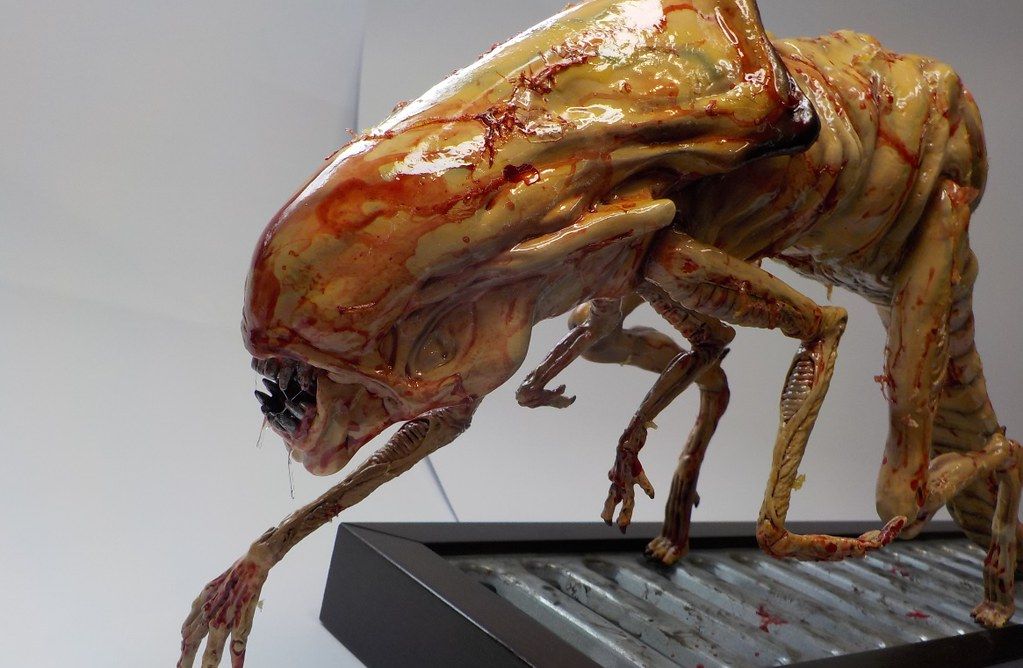
When a Royal Facehugger impregnates a human, the result is a Queen Chestburster, which eventually matures into a Queen Xenomorph. The Queen Chestburster has the crown-shaped head armor that you see in full-grown Queens, and the skin is yellowish in color. They have a sharp set of teeth, and like most other Chestbursters these creatures are incredibly fast. It is noticeably bigger than the regular ones, and it also takes more time to develop within the host body. By the time it erupts out of the body, it already has tiny limbs and a visible crest. While the one seen in Alien 3 did have a crest, the Chestburster seen in Alien: Resurrection did not have one anymore. It is probably because the creature is still immature.
Mutated Chestburster
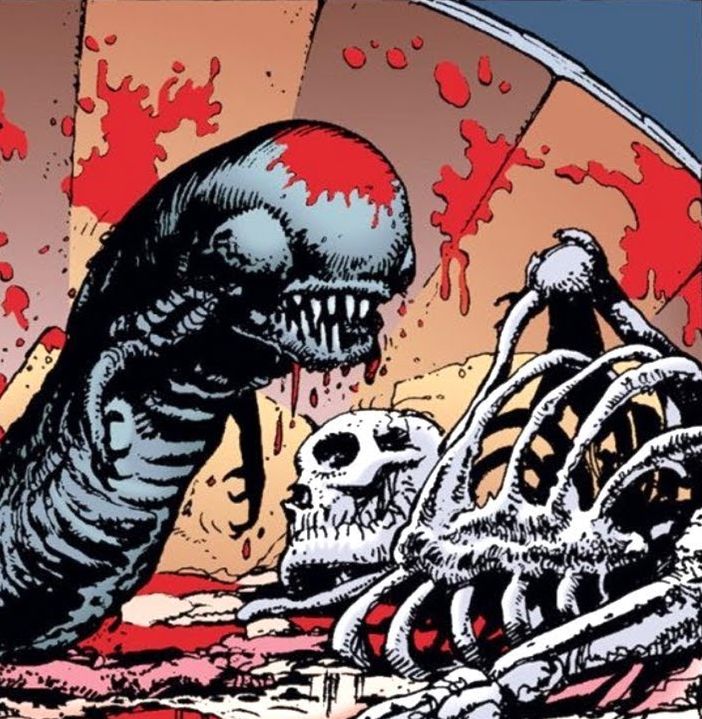
This unique specimen was found in the comic book titled Aliens: Kidnapped, and it was nicknamed the Bodyburster. The fans refer to this one as the Mutated Chestburster because they never reach maturity and remain in the infant stage. It all starts when an Alien egg is dumped by three naïve smugglers. There is something strange about the egg, and the black marketers are skeptical. The real nightmare, however, only starts after the creature hatches. It gets a suitable host, and in time we see a mutated Chestburster emerging from the host body. Soon an alien epidemic of epic proportions has to be dealt with!
The Mutated Chestburster came from a pink Xenomorph egg, which is clearly out of the ordinary. It turns out that the changes were due to a virus mutation. It looks very similar to a regular chestburster, but it has dark, pale skin. They are constantly hungry and their sharp set of teeth is their weapon to attack their victims.
These Chestbursters also have an impressive leaping ability, and they can jump up to attack the head of the victim. The arms are stuck to its chest and it has to crawl until the arms and legs are freed. Unlike the other Chestbursters, this one wasn’t worried about finding a safe hiding place for itself after emerging. Instead, it tried to bite multiple victims and infect them as well. Finally, the Mutated Chestburster died from the infection, but the threat was far from over.
It left behind a pink-colored slime, which started a deadly viral outbreak. In the end, the entire planet of Celeste had to be sterilized by some extreme measures – using missiles! This storyline was not only innovative, but it also showed that Xenomorphs can be vulnerable to infections as well.
Twin and Triplet Chestburster
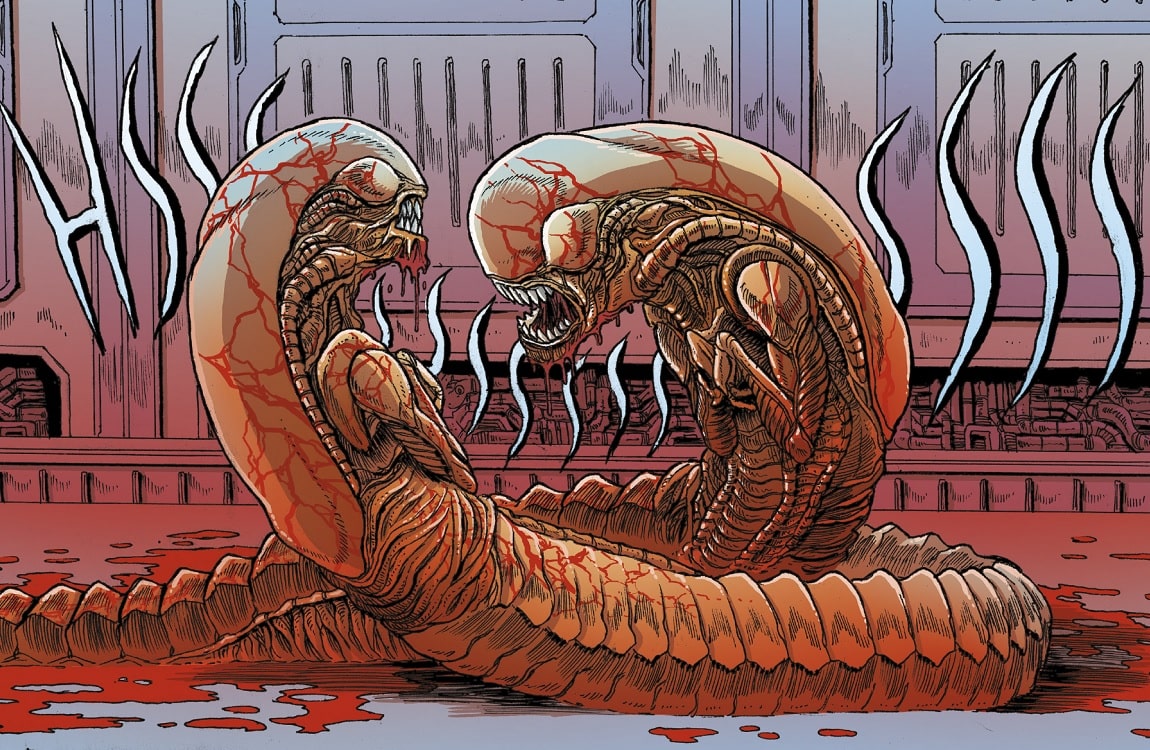
The twin Chestbursters have an interesting story that you will find in the comic book, Aliens: Dead Orbit. Surprisingly, they don’t come from the same host, and the human hosts happen to be twins. The twin Chestbursters emerge at the same time from the host bodies, and they are identical just like the human twins.
They even have a strange connection between them, and the bond between them was something special. They worked together even in their adult stage and the absence of a Queen only strengthened their bond.
Unlike the Twin Chestburster, the Triplet Chestburster was born from the same host and they were seen in the comic book, Aliens: Resistance. The emergence of these Chestbursters from the host body is similar to the Bellyburster because they erupted from the stomach. The difference between the Bellyburster and the Triplet Chestburster is that the latter does not require a pregnant female host and the implantation process is not done by a Predalien.
Immediately after emerging, the bigger Chestbursters killed the smaller one, and this was probably a way to get rid of the weak offspring. The two bigger Chestbursters escaped together and seemed to have a bond between them.
The very concept of an alien creature bursting out from the host body is terrifying. The extensive lore surrounding the various types of Chestbursters has been thoroughly entertaining for us, and we hope you enjoyed a glimpse of their world!
